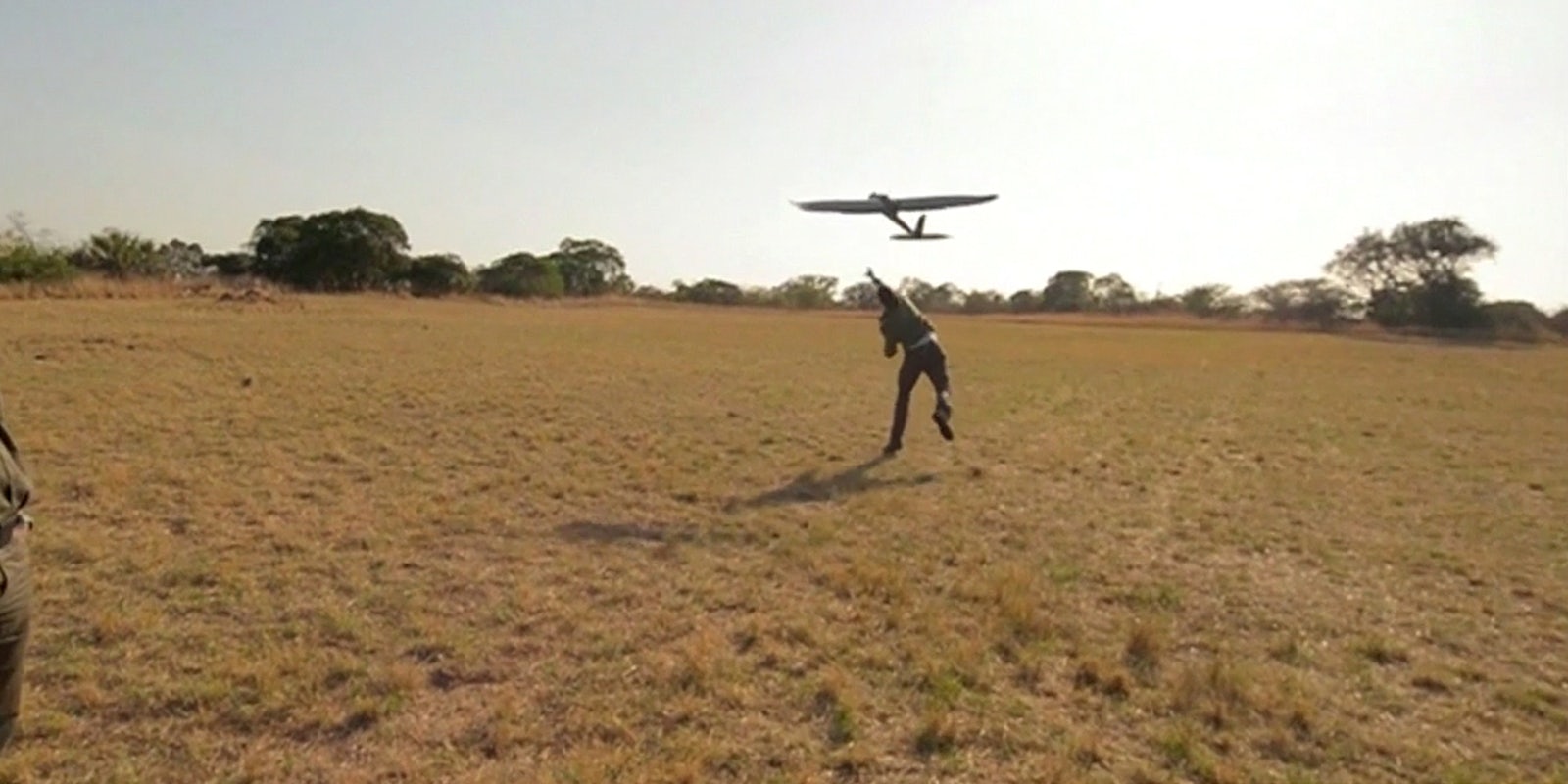In the skies above rhinoceros preserves in the province of KwaZulu-Natal in South Africa, silent, fixed-wing drones patrol parks for poachers.
The unmanned aerial drones are part of the new Air Shepherd program from the Lindbergh Foundation, an initiative to deploy surveillance drones to popular poaching areas in South Africa in an effort to stop people from illegally slaughtering rhinos and elephants for their horns and ivory.
Rhino poaching has hit record highs in South Africa. The beginning of 2015 saw an 18 percent increase in killings than the year before. Horn is more valuable by weight than gold or cocaine, so poaching the animal and selling its horn can be lucrative on the black market. Researchers estimate that, at current poaching rates, African rhinos will be extinct in 20 years, and savannah elephants will be gone in 10 years.
Built for patrolling the parks, the Air Shepherd drones have a GPS navigation system and daylight and infrared cameras controlled by the drone operator and can swivel 360 degrees on a gimbal. The flight time is two and a half hours, so the drone pilots switch out the batteries when monitoring the area for consecutive hours. Using predictive analytics as well as intrinsic knowledge from park rangers, drone pilots can predict where poachers will be and deploy drones to surveil them.
The Lindbergh Foundation recruits local commercial pilots to fly the drones, and takes teams of two through four months of extensive training on the hardware and software. Identifying poachers is not an easy task, for instance, they must learn to recognize the difference between a giant anthill that will appear as a warm body on the infrared camera, and a human being.
Though not affiliated with the national parks, the drone teams are in constant communication with park rangers, can alert them to any illegal activity, and prompt an arrest.
https://www.instagram.com/p/BCDNJC8FkFa/
According to John Petersen, chairman of the board of the Lindbergh Foundation, the drone program has already stopped poachers. Not only has it found poachers in the act, but the program acts as a deterrent to potential poachers who are afraid of getting caught. Because individuals including park rangers, staff, and villagers are aware of when the drones fly, the network of individuals who may tip poachers will tell them to avoid the area.
“There’s a whole network of folks who contribute to kind of the intelligence system to feed info about information about where the animals are to the poachers,” Petersen told the Daily Dot. “And that network works backwards. So when we fly, they are aware of where we fly and when we fly, and so they don’t try to poach.”
It’s not the first time parks have experimented with drones to stop poaching. In 2012, the Hluhluwe–Imfolozi Park ran a two-year drone pilot program and reduced rhino poaching by 65 percent compared to the previous year. Other tech companies are working on solutions to the poaching problem, including biologically manufacturing synthetic rhino horn to supplement the real thing on the market.
Petersen said there’s no concern in terms of the drones crash-landing into animals or vegetation, and while they have experienced accidents on takeoffs and landings, the drones are made to be fixed quickly, and it takes less than a day to repair them.
The Air Shepherd program crowdfunded some of its investment last year through Indiegogo, and while it didn’t meet its goal, continued development of the program. The organization partnered with Peace Parks Foundation, Ezemvelo KwaZulu-Natal Wildlife, and UAV and Drone Solutions for the initial launch. The Air Shepherd program officially debuted in South Africa last month, and is expected to be in Zimbabwe, Botswana, Malawi, and Zambia later this year.
Photos via Burnish Creative/Vimeo
